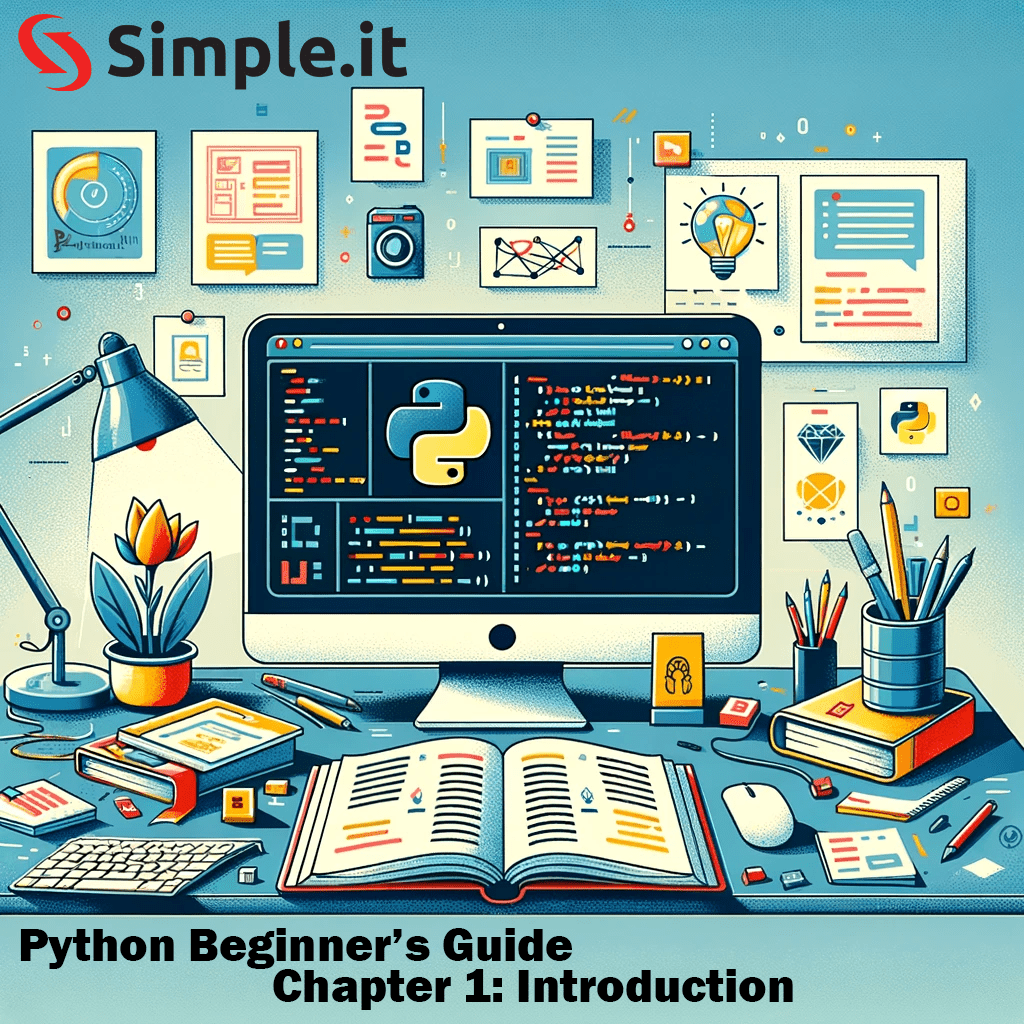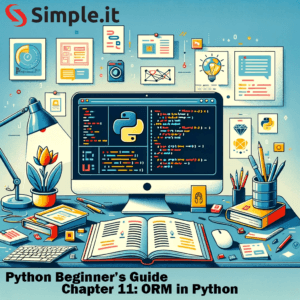Python, a language revered for its simplicity and power, has emerged as one of the most popular programming languages in the world. Whether you’re just starting your programming journey or looking to expand your skills, understanding Python basics is a pivotal step.
Python Basics
Python Basics: What is Python?
Python is a high-level, interpreted programming language known for its clear syntax and readability. It was created by Guido van Rossum and first released in 1991. Python’s design philosophy emphasizes code readability with its notable use of significant whitespace.
Python Basics: The History of Python
The history of Python is a fascinating journey that mirrors the evolution of modern programming languages and reflects the changing landscape of technology.
Origins and Development
- Creation by Guido van Rossum: Python was created by Guido van Rossum in the late 1980s. Van Rossum, a Dutch programmer, started working on Python during his Christmas holiday in 1989. He sought to create a language that would overcome the limitations of ABC, a language he worked with at Centrum Wiskunde & Informatica (CWI) in the Netherlands.
- Influence from Other Languages: Python was influenced by several languages, including ABC, Modula-3, C, C++, Algol-68, SmallTalk, and Unix shell. It was designed to be a highly readable language, with a clean visual layout and an emphasis on the importance of programmer effort over computational effort.
Key Milestones
- Python 1.0: The first official version, Python 1.0, was released in January 1994. It included functional programming tools like lambda, map, filter, and reduce.
- Python 2.0: Released in October 2000, Python 2.0 introduced list comprehensions, a feature borrowed from Haskell. It also included a cycle-detecting garbage collector for memory management.
- Python 3.0 (Python 3000): Launched in December 2008, Python 3.0, also known as Python 3000, was a major revision designed to rectify fundamental design flaws in the language. One of the significant changes was the print statement becoming a function. Although Python 3.0 was not backward compatible, it set the foundation for future development.
Python Basics: Why is Python Popular?
Python’s popularity stems from several key factors:
- Ease of Learning and Use: Python’s syntax is clear and intuitive, making it an excellent language for beginners. It allows new programmers to focus on learning programming concepts rather than complex syntax.
- Versatility: Python is used in various fields, from web development and data analysis to artificial intelligence and scientific computing. This versatility makes it a valuable skill for professionals across different industries.
- Strong Community Support: With a large and active community, Python benefits from a wealth of libraries and frameworks, making it possible to accomplish a lot with minimal code.
- Open-Source Nature: Being open-source, Python is freely available and modifiable. This has led to a rich ecosystem of tools and libraries, further enhancing its capabilities.
- Career Opportunities: Python’s widespread use in emerging technologies makes it a sought-after skill in the job market.
Python Basics: flexibility
Python has established itself as a versatile programming language suitable for various development tasks, including server-side, web, and full-stack development. Its simplicity, robust libraries, and community support make it a preferred choice for developers in these domains.
Python for Server-Side Development
- Ease of Use and Readability: Python’s straightforward syntax makes it easy to write and maintain server-side code. Its readability ensures that the server logic is clear, reducing the likelihood of bugs and facilitating easier updates and maintenance.
- Rich Standard Library and Frameworks: Python comes with a comprehensive standard library that includes modules for handling everything from file I/O to network communication. Frameworks like Flask and Django further simplify the development of server-side logic by providing ready-made components for database integration, URL routing, session management, and more.
- Scalability and Performance: While Python is not the fastest language in terms of execution speed, its ability to integrate with other languages like C and Java allows it to scale well and handle high loads. Asynchronous programming capabilities in Python, such as with asyncio, also aid in building scalable server applications.
- Cross-Platform Compatibility: Python’s cross-platform nature makes it suitable for server-side development, as the same codebase can run on various operating systems with minimal changes.
Python for Web Development
- Full-Featured Web Frameworks: Python’s Django and Flask are among the most popular web frameworks. Django is known for its “batteries-included” approach, offering a built-in admin panel, ORM, and authentication support, making it ideal for rapid development of complex web applications. Flask is more lightweight and flexible, preferred for smaller projects or when more control over components is required.
- Template Engines: Python supports several powerful template engines like Jinja2, allowing for the creation of dynamic HTML content on the server side, which enhances user experiences on the web.
- ORM Support: Object-Relational Mapping (ORM) in frameworks like Django allows developers to interact with databases using Python objects instead of writing SQL queries, speeding up development and reducing errors.
Python for Full-Stack Development
- Consistency Across Stack: Using Python for both front-end and back-end development provides consistency in coding practices and reduces the learning curve for developers who only need to be proficient in one primary language.
- JavaScript Integration: For the front-end, Python can be integrated with JavaScript and its frameworks (like React or Angular) for a more dynamic and responsive user interface. Tools like Brython or Transcrypt allow Python code to run in a web browser, though JavaScript remains the primary language for client-side scripting.
- Data Handling and Analytics: Python’s powerful data handling capabilities (with libraries like Pandas) and analytics (with libraries like NumPy and SciPy) make it an excellent choice for full-stack development where data processing and analysis are crucial.
- Community and Resources: The Python community offers extensive resources, including libraries, frameworks, plugins, and tutorials, which are invaluable for full-stack development. This community support accelerates the development process and provides solutions for common and complex challenges.
In conclusion, Python’s versatility, coupled with its powerful libraries and frameworks, makes it an excellent choice for server, web, and full-stack development. Its ability to handle a range of tasks, from server-side logic to front-end development, along with its strong community support, ensures its continued popularity in the development world.
Python Basics: Mobile Development
Python isn’t typically the first choice for mobile app development, mainly due to its slower runtime and lesser optimization for mobile operating systems compared to languages like Swift for iOS or Kotlin for Android. However, Python can still be used in mobile development, and there are several tools and frameworks available that make this possible. Here’s an overview:
Python on Mobile
- Kivy: Kivy is an open-source Python library for developing multitouch applications. It’s cross-platform (Windows, macOS, Linux, Android, iOS) and designed to create natural user interfaces. Kivy is quite powerful for developing innovative mobile apps with Python, as it supports both the graphical aspects and the touch features of modern smartphones.
- BeeWare: BeeWare is a collection of tools and libraries that allow a Python codebase to run natively on almost all platforms, including iOS and Android. Its major advantage is that it lets you write your app in Python and then deploy it on multiple platforms, including mobile. It includes tools like Toga, a Python native, OS-native GUI toolkit, and Briefcase, which packages Python projects as standalone native applications on various platforms.
- PyQt/PySide: PyQt and PySide are set of Python bindings for the Qt application framework, which can be used to develop cross-platform mobile apps. They are more known for desktop applications but can be used for basic mobile app development.
Limitations and Considerations
- Performance: Python is not as fast as native mobile app languages. This might not be a problem for simple applications but can become noticeable in more complex or resource-intensive apps.
- Native Features Access: Accessing native features like camera, GPS, and sensors is more complicated with Python than with native languages. Libraries like Kivy do provide ways to access these features, but the integration might not be as smooth or efficient.
- User Interface: While Python frameworks can create user interfaces, they might not always feel as polished or responsive as native apps.
- App Store Deployment: Deploying Python apps to app stores can be more challenging. Each store has its requirements and Python apps might need more work to meet these requirements, especially for the Apple App Store.
- Community and Support: The community and support for Python in mobile app development are growing, but it’s still not as extensive as for native mobile development languages.
Ideal Use Cases
Python can be ideal for mobile app development when:
- The app is simple or has limited functionality.
- The app is data-driven and leverages Python’s strengths in data processing and analysis.
- Cross-platform development is more important than high performance or complex native functionality.
- The project is a prototype, MVP, or for personal/educational use, where quick development and ease of learning are prioritized.
In summary, while Python is not the mainstream choice for mobile app development, it offers a viable pathway, especially for developers already proficient in Python or for applications where Python’s strengths can be effectively leveraged.
Python Basics: Additional Resources
If you’re eager to dive into Python, the official Python website is a great place to start with Python basics. It offers resources for downloading Python, documentation, tutorials, and community support.
For those interested in the intersection of programming and security, particularly how it applies to mobile devices, check out our Complete Guide to iPhone Security. This guide provides insights into safeguarding your mobile devices, a crucial aspect in today’s interconnected world.
Additionally, for a broader view of programming and security, explore the security section of our blog, where we delve into various topics that merge the realms of coding and cybersecurity.
Conclusion
Python’s simplicity, efficiency, and widespread application make it a language worth learning. As you embark on your journey into Python basics programming, remember that it’s more than just learning a language; it’s about joining a global community that continually shapes the digital world. Discover the world of Python programming; understand its significance and user-friendly nature in coding.



Pingback: Python Beginner's Guide: Master Python from Basics to Advanced - Simple IT